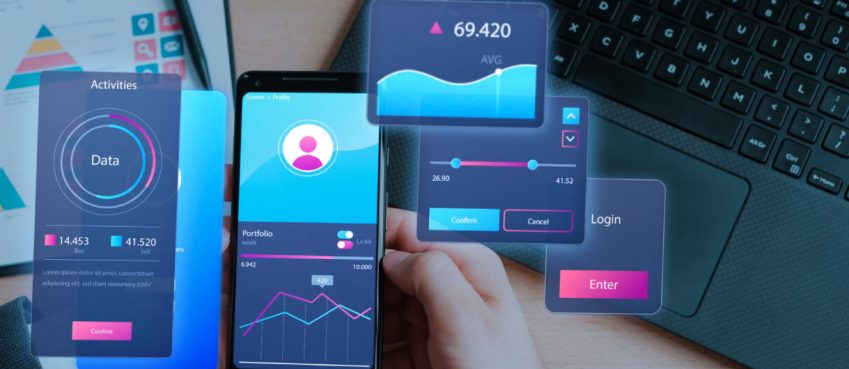
Updated On 08 January, 2024
Looking for federal student loans? Read our guide to know ins and outs and process to enroll for federal student loan, easily.
After the Covid 19 shockwaves, there have been changes made to the federal student loans program as a part of Coronavirus Aid, Relief, and Economic Security Act (CARES Act).
So, if you’re interested in federal student aid, this blog is definitely going to help you.
In this guide:
- Types of federal student loans
- Federal student loan borrowing limits
- Eligibility criteria for federal student loans
- How to get federal student loans
- Advantages of federal student loans
- Alternatives to consider
In general, federal student loans are also referred to as government loans which are organized and funded by the U.S. Department of Education and deployed to the students who filled the form through the federal student aid program.
Unlike private loan institutions, federal loans for students don’t require a credit check, proof of income, and broker. You will have to repay the loans with interest.
And also one thing, federal student loan interest rates are not higher, in alternate terms, lower than the private student loan rates.
Let’s delve into the guide to learn more about federal student loans usa limits, how-to borrow, and advantages.
Also read: 30+ Loan Apps Like MoneyLion and Dave
Table of Contents
Types Of Federal Student Loans
The United States Department of Education’s federal student loan program is managed under William D. Ford Federal Direct Loan Program.
This entity is liable for dispensing loans and providing fair solutions. Additionally, the program only provides loans to those students and parents who are eligible.
Following are the types federal student loans and eligible students criteria with interest rates:
| Loan Type | Student Eligibility | Interest Rate |
|---|---|---|
| Direct Subsidized | Undergraduates with financial need. | 5.50% |
| Direct Unsubsidized | Undergraduates, graduates, and professional students. | 5.50% (undergrad), 7.05% (graduate & professional degrees) |
| Parent PLUS | Parents of dependent undergraduate students with no bad credit history. | 8.05% |
| Grad PLUS | Graduate and professional students with no adverse credit history. | 8.05% |
| Consolidation Loans | Most borrowers with federal student loans. | Weighted average of federal loans |
Direct subsidized: This type of student loans are standard and made to eligible undergraduates who want financial aid to cover the cost of higher studies at college or school.
Direct Unsubsidized: These loans are provided to eligible undergraduate, graduate, and professional students but dependency is not based upon financial needs.
Parent Plus: In this type of federal student loan, parents of dependent undergraduates help pay for education expenses not covered by other financial aid.
Grad Plus: In this, students should attend school at least half-time and enroll in a program that leads to an advanced degree or a professional certificate.
Consolidation loans: A kind of amalgamate, meaning enabling students to combine all of your eligible loans into a single loan entity with a single provider.
Federal Student Loan Borrowing Limits
Each federal student loan type has a limit and how much a student accounts for is decided on the factors like years of attendance, the status of the student, and other financial aid received for education.
Here’s a glimpse of federal student loan borrowing limits:
| First-Year Undergraduate Students | Dependent student: Borrow limit $5,500 with no more than $3,500 in subsidized loans. Independent student: Borrow limit $9,500 with no more than $3,500 in subsidized loans. |
| Second-Year Undergraduate Students | Dependent student: Borrow limit $6,500 with no more than $4,500 in subsidized loans. Independent student: Borrow limit $10,500 with no more than $4,500 in subsidized loans. |
| Third-Year and Beyond Undergraduate Students | Dependent student: Borrow limit $7,500 with no more than $5,500 in subsidized loans. Independent student: Borrow limit $12,500 with no more than $5,500 in subsidized loans. |
| Graduate and Professional Students | Borrow limit $20,500 of unsubsidized only |
To sum up, the aggregate loan amount or loan limit for dependent students is $31,000 with no more than $23,000 as subsidized. Independent students, on the other hand, can borrow $57,500, with no more than $23,000 in subsidized loans.
Furthermore, graduate and professional students can borrow $138,500, with no more than $65,500 in subsidized loans.
Eligibility For Federal Student Loans
Before you plan to take a federal student loan, be sure you must qualify for a federal student loan. Here’s the qualifying metrics to check for:
- Be a United States citizen or eligible non-citizen.
- Have a valid Social Security number (SSN).
- Eligible degree or certificate program, at least half-time.
- Maintain academic progress in college.
- Should not be involved in existing federal student loans.
Be sure to check for the above eligibility in order to avail zero-hurdle student loan process.
Also read: How To Make 5K Dollars In A Month?
How To Get Federal Student Loan (3-Step Process)
As federal student loan is dispense by the William D. Ford Federal Direct Loan Program, there is a systematic procedure that needs to be followed.
Taking a federal student loan usa starts with checking your school for eligibility to receive federal student loans.
Let’s find out more…!
1) Examine your college of choice is eligible for federal aid
The community that provides federal student loans developed some of crucial eligibility requirements for colleges of schools.
Out of many, the most significant kind of requirement is that educational institutions should offer an eligible degree or certificate program that aids to the gainful employment of the student.
So, the point is, ask college or school admin regarding federal student loan requirements and other relevant things.
2) Fill out the FAFSA
After you are satisfied with the selected school or college that prompts fair eligibility criteria in regard to federal student loan grants.
You should next think to fill out the Free Application for Federal Student Aid, an application that informs the community about federal student loan requests by the parent or student.
- Log in to the FAFSA website.
- Select the academic year you are applying for.
- Fill the form confidently and recheck for any mistakes.
- Sign and submit the form using the submit button.
When fill-in form, various information needs to be input such as student demographic details, school information, tax return details, etc.
Note: For first time students, create an FSA ID if you do not already have one.
3) Review your award letter
Upon submitting the form, it is observed as a request.
The community rectifies the details and if all looks good, the application is sent to the school.
The information is also sent to the Department of Education, who in return sends the Student Aid Report (SAR).
So, when will you get the award letter?
Once the school analyzes your federal student aid, it will send an award letter to you that details the amounts.
When you receive the award letter, finalize the amount of aid you want to accept and from which school.
At last, inform the financial aid office of the respective school about your final decision.
Remember, the award letter consists of a deadline, so be sure to respond to your verdict in a timely fashion.
Advantages Of Federal Student Loans
Federal student loans offer several benefits that can make them an attractive option for financing higher education. Some of the key benefits include:
Lower Interest Rates: Federal student loans typically come with lower fixed interest rates compared to private loans. This can result in substantial savings over the life of the loan.
Fixed Interest Rates: Federal loans offer fixed interest rates, meaning your interest rate won’t change over the life of the loan. This provides stability and predictability in your monthly payments.
Income-Driven Repayment Plans: Federal loans offer various income-driven repayment plans that adjust your monthly payments based on your income and family size. This can make your payments more manageable during times of financial hardship.
Deferment and Forbearance Options: Federal loans offer options to temporarily postpone or reduce your loan payments through deferment or forbearance if you experience financial difficulties, such as unemployment or economic hardship.
No Prepayment Penalties: You can make extra payments on your federal loans without incurring any prepayment penalties. This can help you pay off your loans faster and save on interest.
Federal Student Loan Alternatives
Indeed, the department of education is a go-to for borrowers for the reasons listed above. But here are some alternatives to consider as well.
Scholarships
Scholarship is a great way to pursue your education without cost worries. As scholarships come in many forms including awards for outstanding sports and more, it can make a big difference.
Grants
Grants can also make a big difference in competing college degrees or schooling. As it is most similar to scholarships, it does not need to be repaid. Grants can be provided from governments, corporations, and community organizations.
Private Student Loans
Other than federal student loans, graduates and parents can take loans for study from private banks or institutions. But, taking loans from private companies is difficult because it usually requires a good history of credit score, proof of income, and a consignor.
Also read: 10 Apps Like EarnIn That Pays You Everyday
Conclusion
Federal loans are easy to approach and supportive for students because of its advantages as compared to private federal loans.
It is important to do a well-research before applying for federal student loans in the USA. There are various things to look out for such as better school or college, federal student loan limit and filing process, and more.
If you have any questions or share suggestions, comment your thoughts!
Frequently Asked Questions
How do I apply for federal student loans?
To apply for federal student loans, you need to complete the Free Application for Federal Student Aid (FAFSA).
What's the difference between subsidized and unsubsidized loans?
Subsidized loans are need-based loans where the government covers the interest. Unsubsidized loans are not need-based and accrue interest from the time they are disbursed.
How much can I borrow through federal student loans?
The amount you can borrow depends on factors like your year in school, dependency status, and the cost of attendance at your chosen institution.
Can federal student loans be discharged in bankruptcy?
While it's challenging, it's not impossible to have federal student loans discharged in bankruptcy.
Can I consolidate federal student loans?
Yes, you can consolidate multiple federal student loans into a single Direct Consolidation Loan.
Top 10 News
-
01
Top 10 Deep Learning Multimodal Models & Their Uses
Tuesday August 12, 2025
-
02
10 Google AI Mode Facts That Every SEOs Should Know (And Wha...
Friday July 4, 2025
-
03
Top 10 visionOS 26 Features & Announcement (With Video)
Thursday June 12, 2025
-
04
Top 10 Veo 3 AI Video Generators in 2025 (Compared & Te...
Tuesday June 10, 2025
-
05
Top 10 AI GPUs That Can Increase Work Productivity By 30% (W...
Wednesday May 28, 2025
-
06
[10 BEST] AI Influencer Generator Apps Trending Right Now
Monday March 17, 2025
-
07
The 10 Best Companies Providing Electric Fencing For Busines...
Tuesday March 11, 2025
-
08
Top 10 Social Security Fairness Act Benefits In 2025
Wednesday March 5, 2025
-
09
Top 10 AI Infrastructure Companies In The World
Tuesday February 11, 2025
-
10
What Are Top 10 Blood Thinners To Minimize Heart Disease?
Wednesday January 22, 2025







